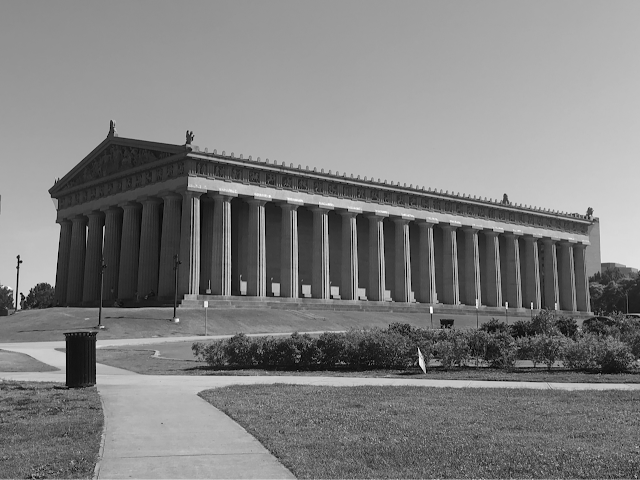Yes, you read that right—there’s a full-scale replica of the Parthenon in the heart of the American South. And inside? A towering statue of Athena. So how did a symbol of ancient Greek civilization end up in Nashville?
The “Athens of the South”
Nashville has long been known as the “Athens of the South,” thanks to its many educational institutions and dedication to classical learning. So, some city leaders thought, what better way to live up to that nickname than to build a replica of one of history’s most iconic architectural landmarks—the Parthenon.
And so began one of the most surprising cultural imports in American history: a faithful reproduction of Athens’ crowning architectural achievement, right in Tennessee.
The Creation
In the late 1800s, Nashville was preparing for the Tennessee Centennial Exposition, a grand event marking 100 years since the state joined the Union. Eugene Castner Lewis, director of the exposition, envisioned a celebration that would include replicas of classical monuments, all built in Centennial Park.
The crown jewel of the exhibition would be a full-scale replica of the Parthenon. The project was led by architect William Crawford Smith, a Civil War veteran who fought for the South. Unlike the other buildings at the fair, the Parthenon was constructed to mirror the original in Athens down to the exact dimensions.
From Temporary to Timeless
Originally built using plaster, wood, and brick, the Nashville Parthenon was intended as a temporary structure—set to be dismantled after the exposition ended. But its popularity changed everything. The city decided to keep it, making it the only structure from the 1897 Centennial Exposition to remain in the park. (Only one other structure from the exposition survived—the Knights of Pythias Pavilion, which was relocated to nearby Franklin.)
Over the next two decades, however, the original materials began to deteriorate. In the 1920s, the city decided to rebuild the Parthenon using concrete. Architect Russell Hart took over the project, completing the exterior in 1925 and the interior in 1931.
A Cultural Landmark
Since then, Nashville’s Parthenon has become an iconic part of the city’s landscape, drawing hundreds of thousands of visitors each year. It has hosted grand theatrical productions, competitions, and public events—cementing its role as a vibrant cultural hub.
The Statue of Athena
In 1990, a full-scale replica of the famed Athena Parthenos statue was installed inside the Parthenon. Standing 42 feet (13 meters) tall, the statue brings to life the centerpiece of the original temple in Athens. In addition, sculpted replicas of the original pediment figures now adorn the building, completing the authentic experience.
Museum and Cultural Center
Today, the Parthenon serves as an art museum. It houses a permanent collection and regularly features traveling exhibits. In the summer months, the grounds host performances of ancient Greek tragedies—bringing classical drama to life under the stars.
In 2001, the building underwent extensive restoration and cleaning, including an upgraded lighting system that now illuminates the structure beautifully at night.
Plan Your Visit
The Nashville Parthenon is open daily to the public, with an admission fee of $10. It also has an official website where visitors can learn about its history, upcoming exhibitions, and special events.
What started as a centennial celebration has become a lasting symbol of Nashville’s unique blend of Southern charm and classical inspiration.






